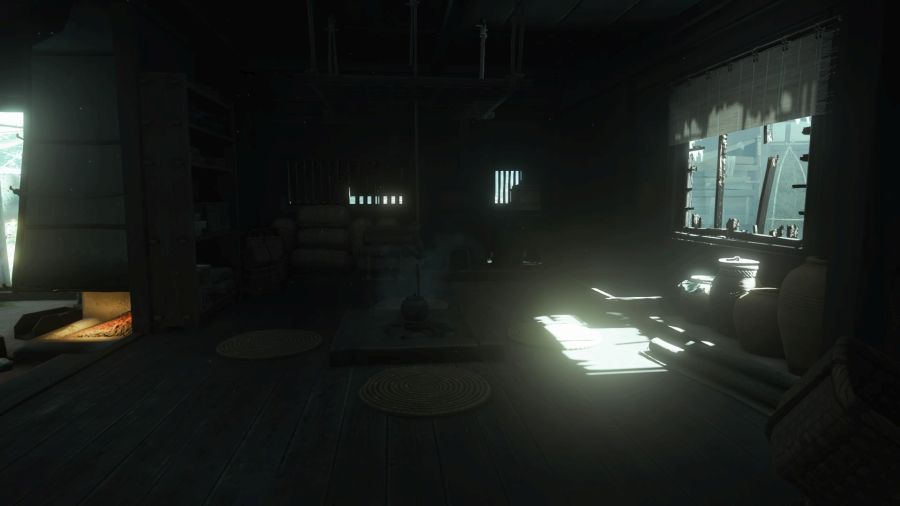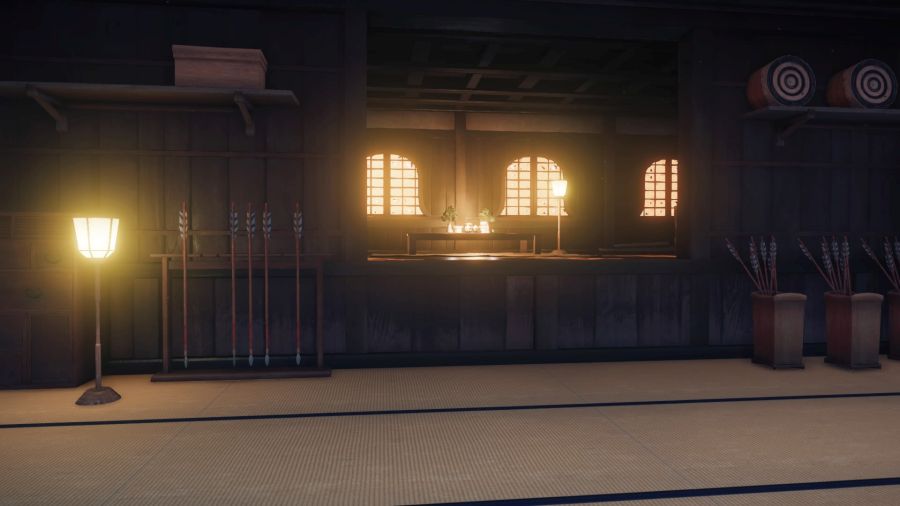I was making some notes for myself, and decided to share them. Why not?
From the design of each door, I can derive a parts-list and assembly order. My plan is to put tape marks down the hallway and make a small pile of each component as I bring them off the table-saw.
Looking at these charts also helps me think about where the materials will be strong or weak. It’s a trade-off against the amount of material being used. For example, I can make the doors 8′ 6″ tall pretty easily, but unless I do some kind of trick to make the long sides 6″ longer, I’ll need pieces of wood longer than I can cut from a sheet of plywood. I could cut the sides and patch in a 6″ chunk, then cut back the sides where the kick panel goes, and the whole door will be stronger and about twice as complicated to make. Does it matter? The question is whether two pieces of 3/4″ plywood are going to be stable enough. My guess is that they will, especially since they’ll be standing on one edge and gravity will not be pulling any particular side down.

On the open wall of the shed, there is a beam across, about 8′ 8″ up (I need a more precise measurement) I can mount the header rail onto. The bottom rail is going to be a 3″ wide piece of 3/4″ polypropylene butchers’ block with grooves table-sawed into it. On the bottom of each door will be another piece of polypropylene butchers’ block, screwed onto the foot of the door. That’ll do three things: the doors will not sit in water (good!), it’ll provide a slippery warp-free sliding surface, and the lower poly rail will act as a water barrier against wind-driven rain, to keep it out of the building. I can get a good enough tolerance on my table-saw that the floor-rail will be practically water-tight. I probably should buy some thinner poly so I don’t have to waste the 3/4″ stuff; it’s expensive.
The rails of the 2nd layer will need cuts into them to support the latticework. That’s the most detailed work I’ll have to do, and it’ll take seconds per piece with my hand jigsaw. I may make the latticework out of 3/4″ plywood instead of 1/2″, to make it less likely to warp and thick enough to support a screw through the fiberglass sandwich. If I do that, I’ll need to chisel 1/4″ of wood off the ends, which is not a big deal.
So, the plan is to cut all the pieces, then assemble 6 sets of the first 2 layers. Then, I’ll paint the exposed surfaces of the last layer, place the fiberglass, add glue, and screw the whole thing together. It should be much, much easier to do the painting with the doors semi-assembled so I don’t have to work around the lattice in the middle.

I have just finished playing Ghost of Tsushima (short review: it’s really good!) and one of the things I immediately fell in love with, in that game, is the interiors of the Japanese buildings of the period. They did quite a good job of capturing peasant homes, castles, forts, and specialist buildings. I was happy to note that the blacksmith’s studio even had correct Japanese-style anvils (not a European horned anvil) and dogs’ head hammers (which should be called “capybara-faced hammers”). I wish I had the patience to build a shop that looked like a 13th-century forge, but that would be effort down the drain; I don’t really need to try to impress anyone with my set-up, I just need to be happy with what I create for myself.

outdoor view of the bowyer’s shop

interior of a peasant home

the bowyer’s shop

inside ishikawa, the archer’s, dojo

exterior of ishikawa’s dojo

How much are these doors going to weigh?
@chigau – probably 40 lb apiece. Plywood is much heavier than magnolia.
One other thing I gleaned from Ghost of Tsushima and Seven Samurai is that 14th century Japanese were probably cold all the time. Especially the poor. But what is “airy” is also “drafty” and there is no insulation, anywhere.
It’s beautiful architecture but it probably sucked to live in. Hideo Gosha’s beautiful film Goyokin features a lot of vistas of life in Niigata prefecture (mid-north Japan) in the winter. Vistas of blowing snow blasting through windows and walls, with people wrapped in blankets stumbling around chopping eachother with swords. Good times.
Oh, Elder Horrors of the Internet! Fucking fuck.
Don’t read this comment unless you’re ready to lose your faith in humanity.
I searched for “dog head hammer” because I didn’t know what one looked like and the dog-head/ capybara-faced debate intrigued me. I ended up with some pictures of hammers, but they looked a bit different from each other so there seemed to be a range of hammers in that class. I scroll down – hardly at all, it was in the first row off the bottom of my browser’s list as initially returned – and there’s a story with a headline obviously about animal abuse. I did not, of course, click on the damn thing, but the headline & photo were enough.
Marcus, sorry to post off topic, but Repurposed Materials is selling section of ski lift cable in 1 to 100 foot sections. If you’d like, I can send more information.
It is still cold in many homes in Japan. When I visited my girlfriend’s family just outside of Tokyo for three weeks in December and January (in the 1990s), I was very cold. Tokyo is roughly at the same latitude as my home in Nashville, so it was in the 30s during the day for most of my stay. They were very solidly middle class, too, but electricity is prohibitively expensive. Most, if not all outer walls were not insulated and could slide open for fresh air, as well as hanging laundry since clothes dryers are out of the question for anyone not wealthy. (Did I mention electricity is prohibitively expensive in Japan?) Only the family room had a space heater (kerosene?), and they had a kotatsu, which is a low table with a heater underneath and a blanket like skirt around the outside that hangs to the floor and keeps the heat in. After dinner, we spent evenings around the kotatsu with our legs under the skirt. Also, they have the hottest baths I ever experienced. One bath is drawn for the household and each person takes a shower before getting into the bath (all solo, of course). It was so hot I thought my skin would peel off the first time I got in, but it was extremely relaxing once you adjusted to it. Once you got out, it had the added benefit of keeping you warm until you got in bed. You could feel the heat radiating from your body, but wouldn’t feel chilled in the colder air. The bed, which was a sort of mat on the tatami floor, had the thickest, heaviest comforter I’ve ever been under, but I couldn’t sleep without tying a t-shirt around my head and ears to keep semi warm. Also, the toilet seat was heated to keep you from freezing your … well, you know.
Then, sure, but if you have your own home now (the way your father seemed to in your story) photovoltaics will be cheaper & can be financed — wouldn’t they?
I wonder if the ready availability of increasingly affordable home photovoltaics will change not only appliance purchasing, but also the use of insulation on detached homes?
Heated toilet seat FTW!
IMO Japanese toilet technology is one of the wonders of the modern world. When we build our retirement house I want the bathrooms to have appropriate outlets in the bathrooms to enable installation of Toto devices.
Home solar power is a way to reduce your bills a bit, after you’ve got through the payback decade. That’s in the UK, where I don’t run (or own, or need) a/c, have only just started running heating having switched it off in February, don’t charge a car, and cook mostly on gas. I can’t imagine pv making any noticeable dent in the cost of electricity for any home that doesn’t have a back garden the size of a football field covered in panels, rather than the poxy little ones covering part of my roof that were the largest I was allowed.
Given how Japan is on the ring of fire, how come they’re not all on the geothermal like Iceland is?
toilet seat was heated
One trip to Tokyo in the 90s included a binge on sake at a restaurant. I got back to my hotel (The Imperial) late and bleary, desperate to go to the bathroom – so desperate I did not turn on the light. As it happened, when sitting on the toilet, I hit a button which caused the toilet to squirt a soothing jet of water right up my butt. I pretty much jumped out of my skin.
The ideo-logos on the control pads for those things are pretty funny.
Japanese people are cold in their homes today! Friend of mine and his wife live in Tokyo, a lot of apartments have air conditioning for the summer but no heating for the winter. People just sit at home wearing jackets. Fits with the japanese ethos of life equals suffering.
When we were visiting two years ago my partner went to the toilet, where she found lots of controls for various functions of the toilet like the bidet or heating. But she couldn’t figure out how to flush. She was so focused on the various buttons that she did not notice the oldschool lever on the toilets watertank.
Pre-electricity stuff like onsen is. For other stuff: Tepco has too much influence.
The toilet seats are also interesting because they show how design varies a lot, yet there’s standardization of the most important features. Some may have more than a dozen buttons, directional pads to adjust the jets, and other niceties — but all I’ve seen have the same four (occasionally only three) large buttons in the same order, from front to back: stop (usually orange), wash rear, wash front, and dry (not all toilets have this one). Once you get used to the basic layout, you can use any toilet, even in the dark.
Anyone else here seen Goyokin?
I was shivering in the theater.